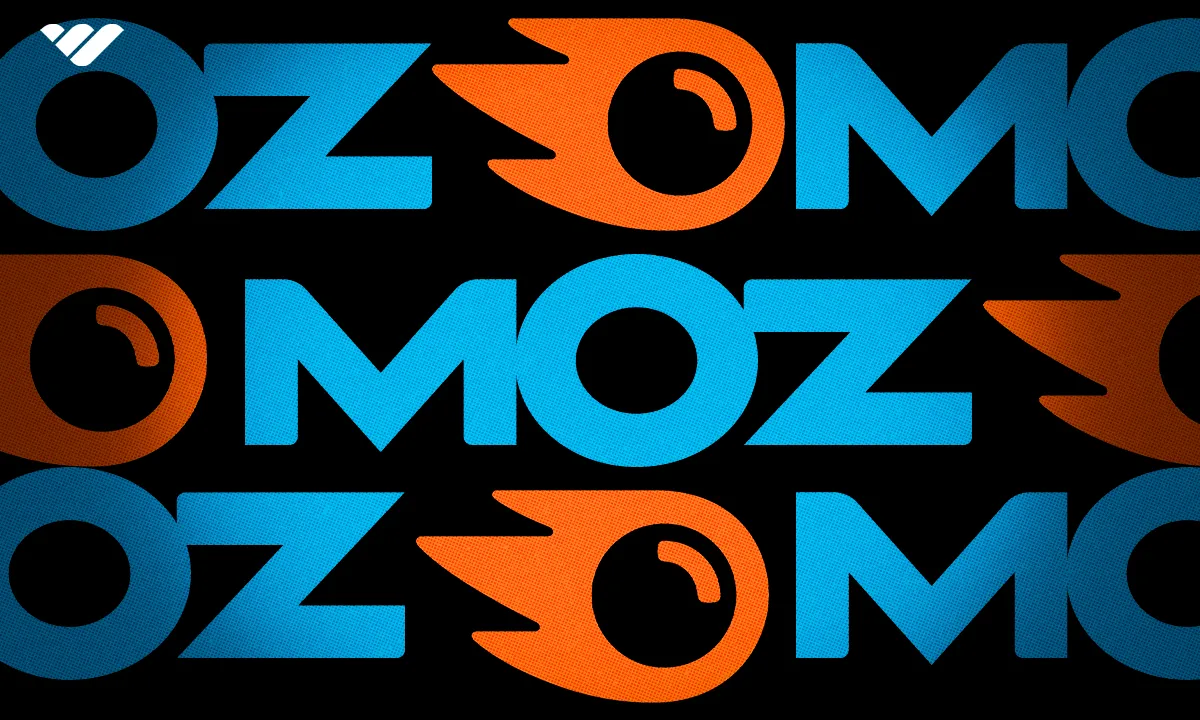Learn which SEO tool is best for growing an ecommerce brand: Semrush or Moz. In this article, we cover everything from pricing to pros and cons.
Key takeaways
- Organic search results capture 45.1% of desktop clicks versus only 1.8% for paid ads.
- SEO generates the highest ROI among digital marketing channels at 748% average return.
- Semrush offers 25.5 billion keywords while Moz's database contains 1.25 billion keywords.
- Semrush's cheapest paid plan costs $117.33 monthly versus Moz's $39 monthly starter plan.
- Over 500,000 marketers use Moz while Semrush has 100,000+ paid subscribers.
Finding the right SEO tool is essential for growing ecommerce brands. According to data from Semrush, 45.1% of all search result clicks on desktop go to organic website results. Despite their position at the top of the page, only 1.8% of desktop users click on a paid result.
So, it’s clear that search engine optimization (SEO) matters. If you’re relying on paid advertising, you could be missing out on lots of clicks - and purchases. Not sure which platform’s right for you?
In this post, Whop will take you through two industry-leading SEO tools for digital creators and dropshippers alike. We’ll cover the pros and cons of Semrush vs Moz, so you can find the right platform to boost your visibility.
Is SEO Worth It for Ecommerce Brands?
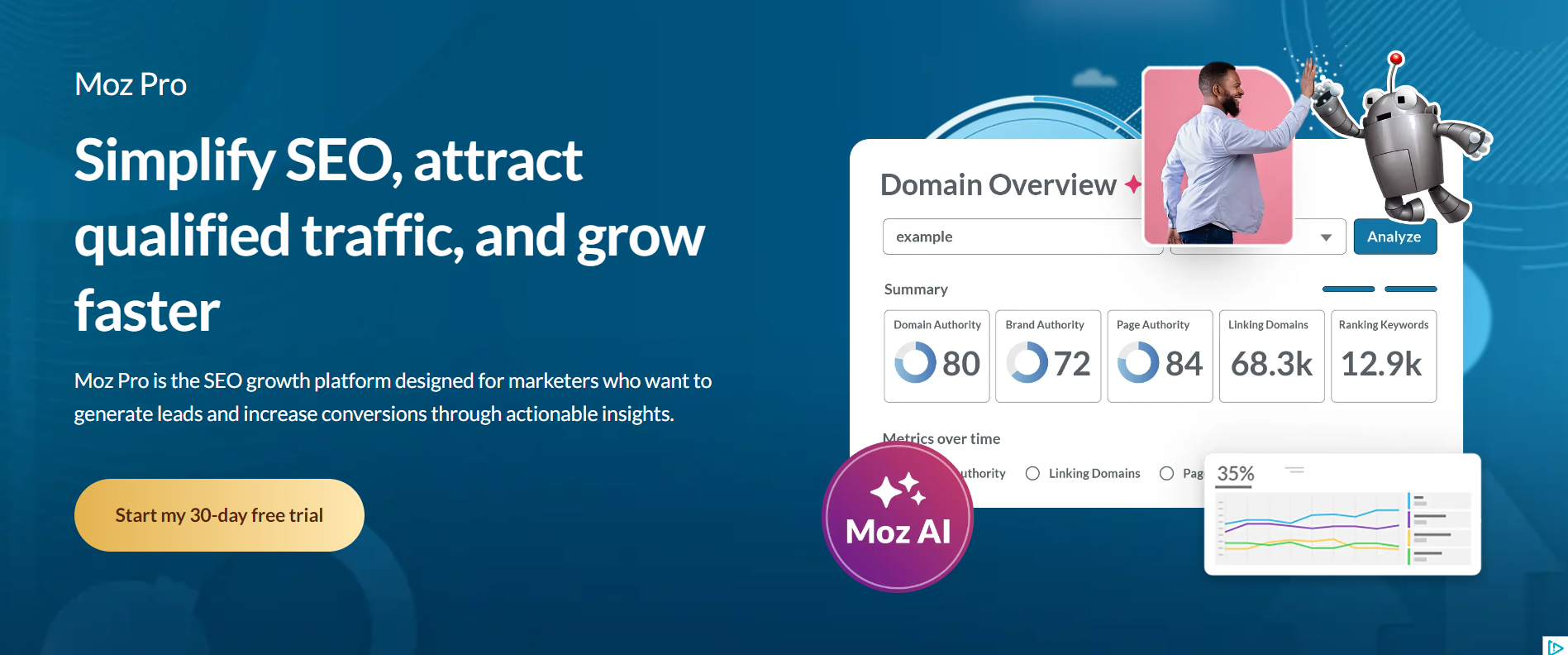
Yes, absolutely. According to data from First Page Sage, SEO generates the highest return on investment out of all digital marketing channels. That’s with an astounding average ROI of 748%.
It’s not difficult to see why SEO is popular in ecommerce marketing. It’s a low-cost solution that can boost visibility, draw in new customers over time, and build your credibility on the web.
By incorporating good SEO practices into your ecommerce website, your blog posts and product pages will be more likely to appear higher in search engine results. That includes Google, Bing, and others.
As your organic posts rise in the rankings, potential customers are more likely to see them and click through to your site. This increase in clicks and credibility can naturally lead to more sales too.
But which is best out of Semrush vs Moz? Let’s take a look at the platforms next…
Promoting an Ecommerce Brand With Semrush
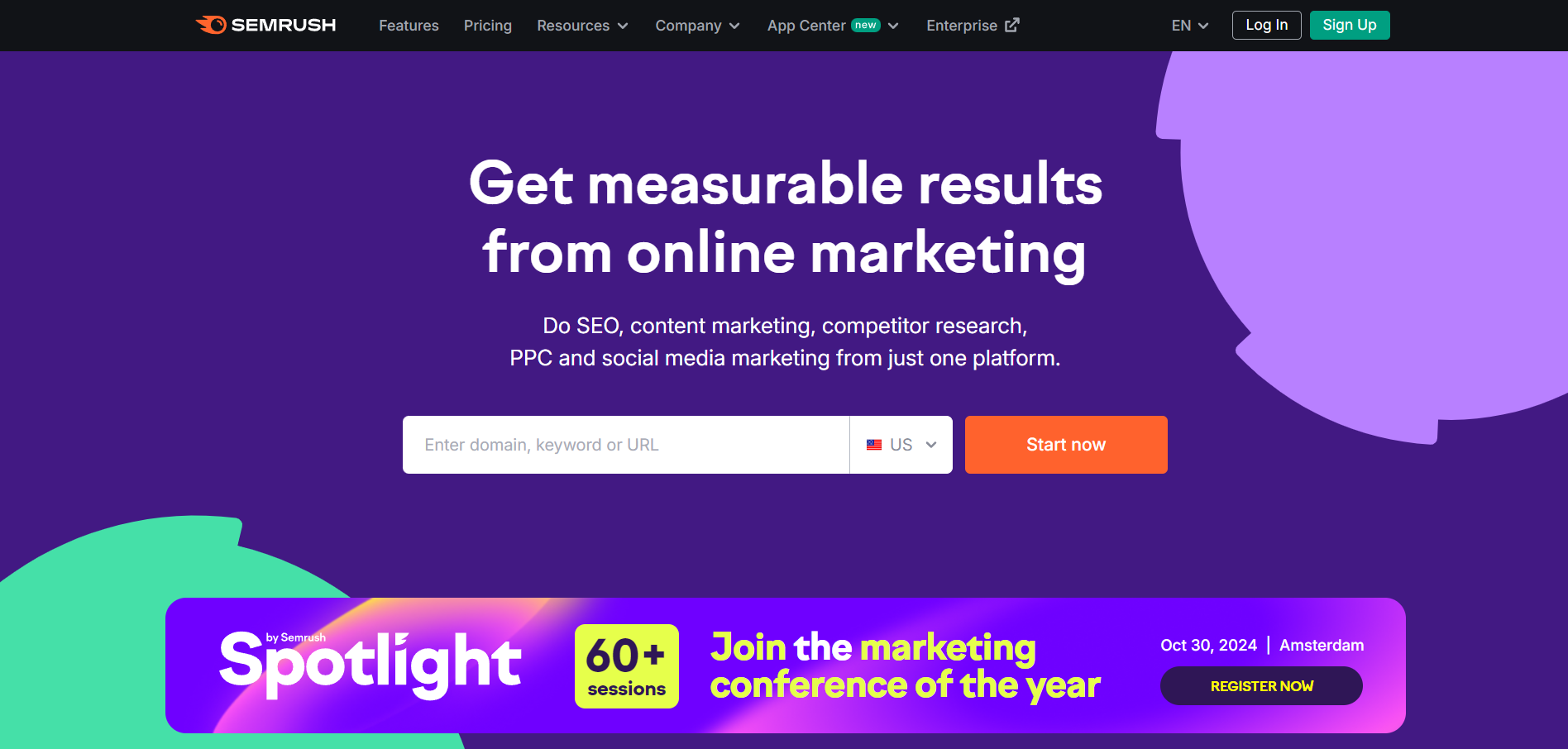
With 100,000+ paid subscribers and 1 million+ active free users, Semrush is a highly popular SEO tool. But it doesn’t stop there.
The platform also includes “toolkits” for other types of marketing, including content marketing, paid advertising, and social media. This means the platform is indispensable for ecommerce brands looking for an all-inclusive tool. So, what will you get with Semrush?
What are Semrush’s main features?
As mentioned above, Semrush’s features are split into several toolkits. Each focuses on a different area of marketing, from local SEO to trend tracking.
With Semrush’s cheapest monthly package, you’ll get access to a few of these toolkits. For others, you’ll need to buy a separate add-on or upgrade to a more expensive plan.
These toolkits are:
- SEO
- Semrush Local
- Advertising
- Semrush Social
- Content Marketing
- Management
- Semrush .Trends
- Agency Growth Kit
Some of the most important features in these toolkits for ecommerce brands include:
Keyword research tools: Find the perfect keywords for your campaigns in a vast database of over 25.5 billion+ keywords with the Keyword Magic Tool. Plus, drill down into keyword data, including its estimated value, with the Keyword Overview.
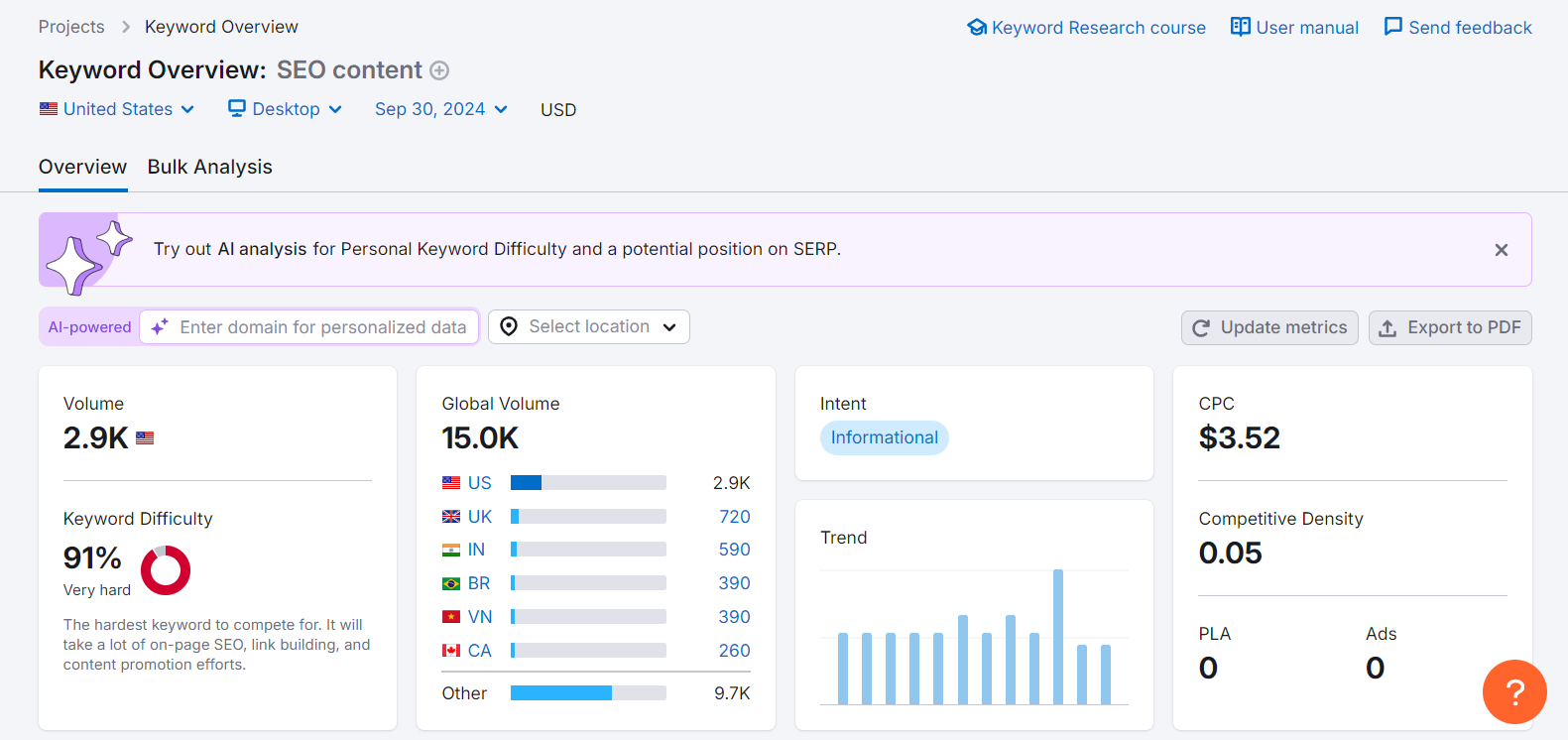
Rank tracking: With Position Tracking, you can track your keyword rankings to evaluate how well your site is performing, with daily updates to keep your data relevant. Generate reports to keep your team in the loop.
Link building: With Semrush’s link-building tools, you can find out which domains backlink to your competitors, and contact them on the same dashboard with an email outreach campaign. You can also audit your current backlinks, making it easier to remove harmful links.
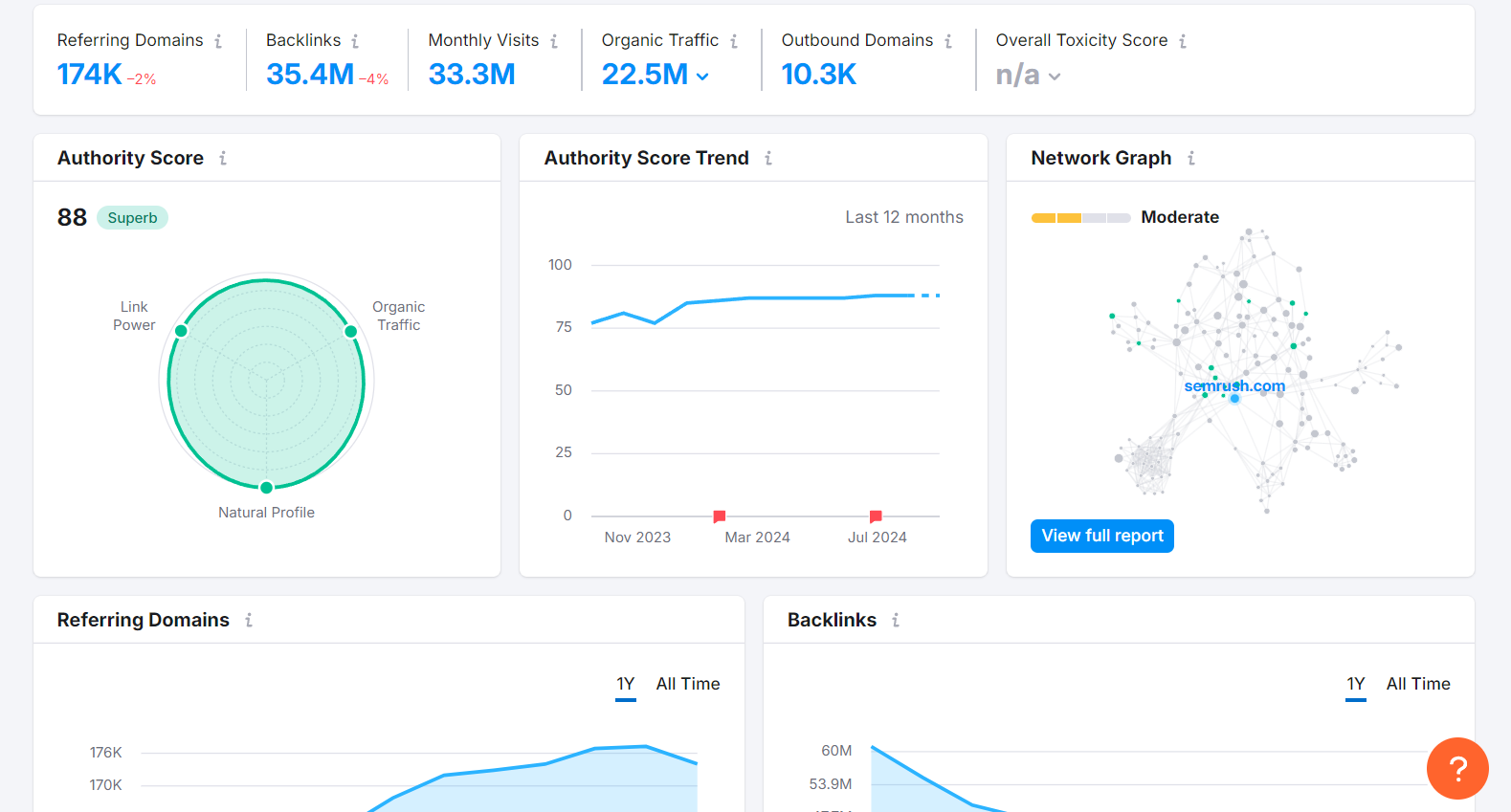
Site audit: SEO isn’t just about links and keywords. You also need to ensure your website’s health and speeds are optimized. Semrush’s Site Audit helps you to pinpoint any potential issues that need to be resolved for improved SEO.
Competitor research: Explore data from your competitors’ websites and campaigns to learn what’s working (and what isn’t), including for organic and paid searches.
Paid ad research and management: Semrush doesn’t just cover organic marketing. It also provides the tools you need to promote your ecommerce business through paid ads, including the Ads Launch Assistant to develop and launch your ads.
Market insights: Gain unique insights into your industry, audience, competitors, and more with the Semrush .Trends toolkit. You’ll need to pay for this toolkit as an add-on.

Social media posting: Along with social media analytics and tracking, Semrush Social also provides a scheduling tool for a wide variety of social media platforms, including Facebook, Instagram, X, TikTok, and more. This toolkit is available as a paid add-on.
How much does Semrush cost?
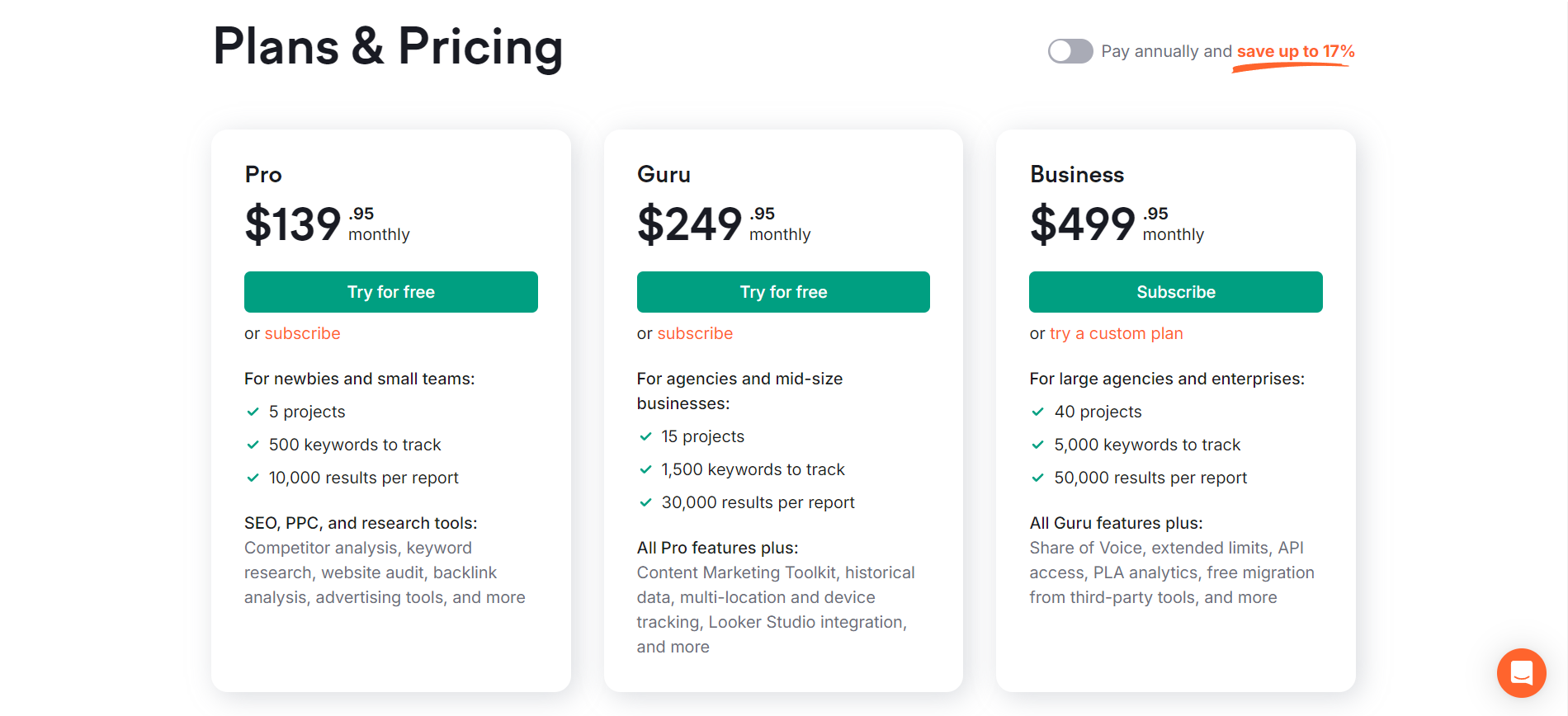
Semrush has several different plans to choose from. If you’re looking for a free platform, there is a free plan available. Keep in mind, though, that this plan is very limited. You’ll only be able to search 10 keywords per day and audit 100 pages per month, for example. As your website grows, you’ll quickly need to upgrade.
To make full use of these features, you’ll need to choose a paid subscription. Your three core options are:
Pro plan
Pricing: $139.95 per month (monthly payments) or $117.33 per month (annual payments)
The cheapest of the paid tiers, the Pro plan includes:
- Access to several key toolkits, including SEO and paid advertising
- 5 projects
- 5 scheduled reports
- 500 keywords tracked
- 10,000 results in analytics reports
- 100,000 pages crawled in the Site Audit tool per month
Guru plan
Pricing: $249.95 per month (monthly payments) or $208.33 per month (annual payments)
If you’d like to upgrade for more features and reduced limitations, the Guru plan could be for you. Here’s some of what you’ll get:
- All the features in the Pro plan
- Content marketing tools
- Access to historical data
- 15 projects
- 20 scheduled reports
- 1,500 keywords tracked
- 30,000 results in analytics reports
- 300,000 pages crawled in the Site Audit tool per month
Business plan
Pricing: $499.95 per month (monthly payments) or $416.66 per month (annual payments)
For larger brands looking to scale, there’s also the Business plan. This includes:
- Features from the Pro and Guru plans
- “Share of Voice” metrics
- API access
- 40 projects
- 50 scheduled reports
- 5,000 keywords tracked
- 50,000 results in analytics reports
- 1,000,000 pages crawled in the Site Audit tool per month
The Local SEO, .Trends, Social Media Management, and Agency Growth Kit toolkits must be purchased separately as paid add-ons. This can drastically increase your costs, so keep an eye out for the price. For example, the .Trends toolkit will add a whopping $289 per month per user to your Semrush bill.
Beyond this, there are also fees for AI tools and adding more user accounts. Large, established ecommerce brands may want a custom plan. You can contact Semrush’s sales team to discuss their Enterprise solutions.
Semrush advantages
- Diverse toolkits: Semrush isn’t just an SEO tool. It’s a full-blown marketing powerhouse, offering custom solutions for everything from social media to content marketing.
- Comprehensive dashboard: The diverse toolset means you can keep your marketing tools all on one platform, saving you time and money.
- Vast keyword database: Semrush’s 25.5 billion+ keyword database means you’ll never miss out on fantastic keyword choices.
Semrush disadvantages
- Expensive software: Whilst Semrush’s features are valuable for online entrepreneurs, they come with a huge price tag. The platform’s cheapest plan starts at $117.33 per month.
- Limited tools: Although the SEO tools are of a high standard, experienced marketers may find the other tools, including for social media, relatively limited.
- Difficult to learn: With vast features comes vast learning. Semrush has a big learning curve and isn’t always suitable for beginners.
Improving Your Visibility With Moz
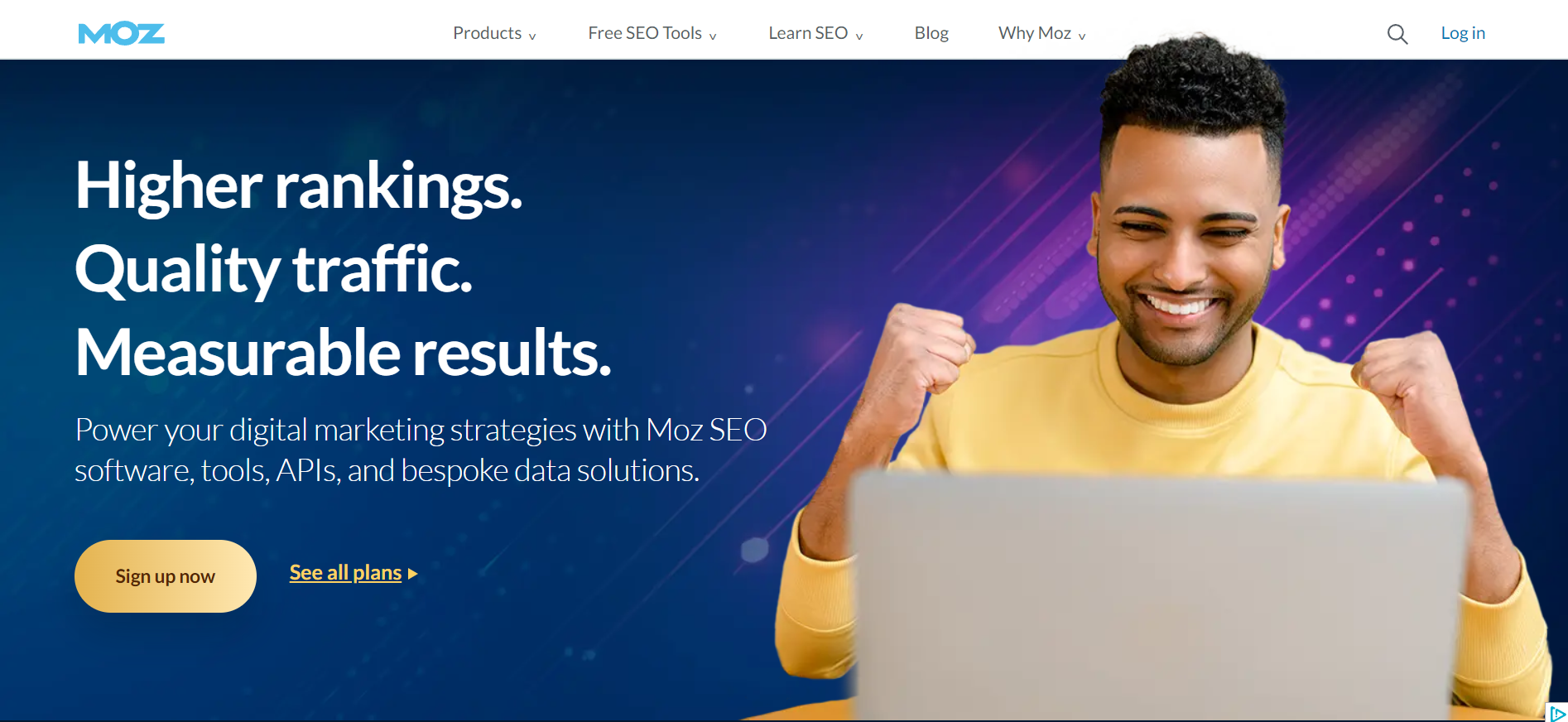
If Semrush sounds outside of your budget, don’t worry. There are other SEO tools, like Moz. According to Moz’s website, over 500,000 SEO marketers use the platform. But with Semrush vs Moz, which offers the best features?
What are Moz’s main features?
Moz offers several products. If you’re looking for professional SEO tools, Moz Pro is likely the best choice for you. This tool includes:
Keyword research tools: Like Semrush, Moz provides keyword search tools to find meaningful keyword suggestions and drill down into their data, including for search volume. Keep in mind that Moz’s database is smaller than Semrush’s, with 1.25 billion+ keywords.
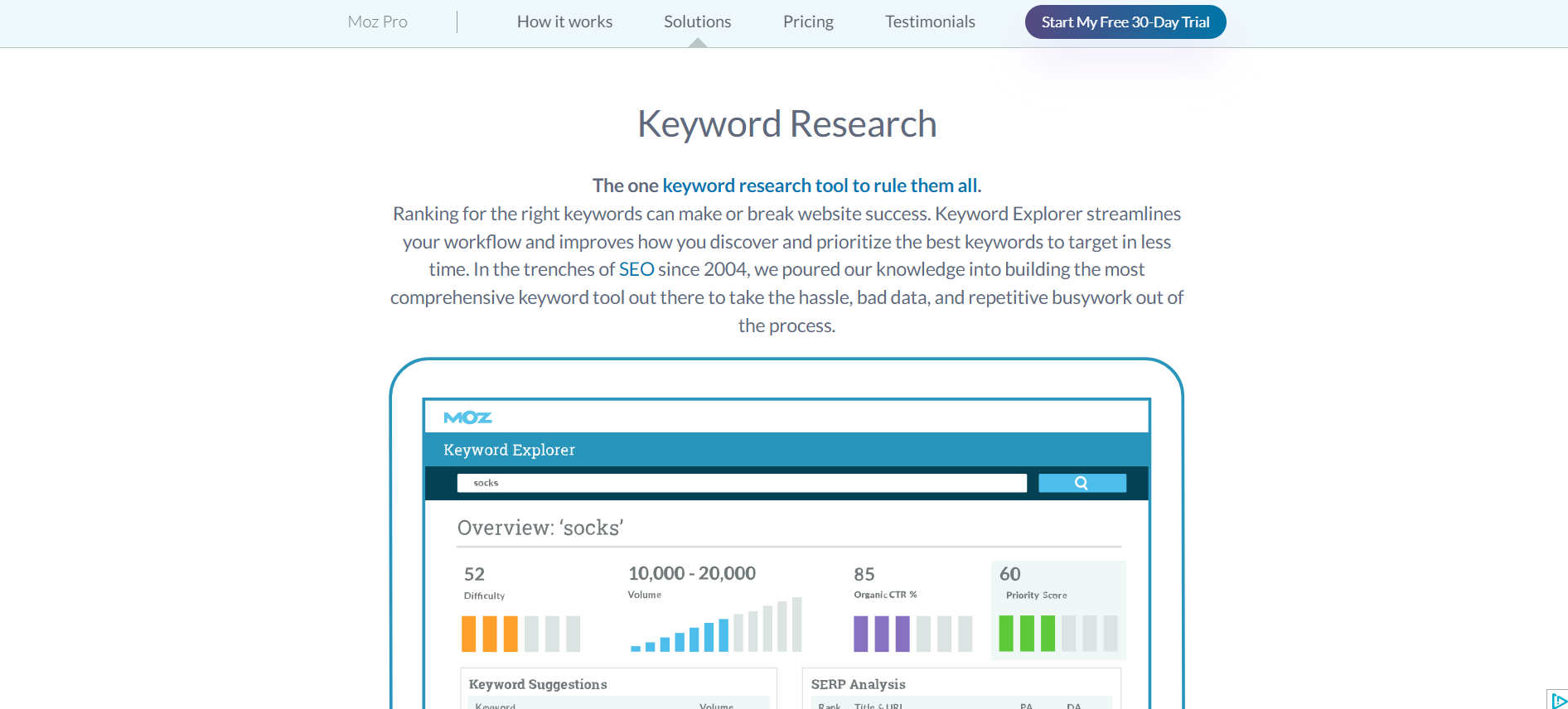
Rank tracking: Keep an eye on your position on search engine results pages (SERP), and track the keyword performance of your website, along with your competitors’.
Competitor research: Uncover insights into your competitors, including for keywords, SERP details, high-performing pages, and links.
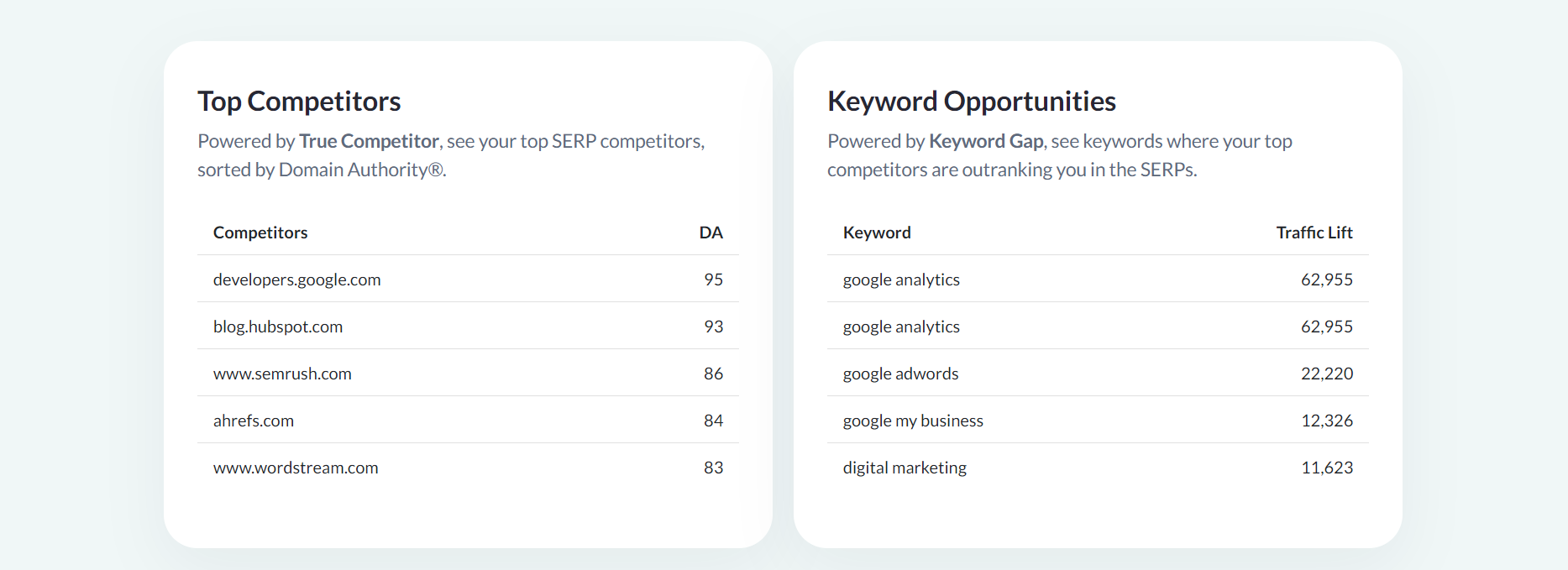
Site audit: Conduct audits to find technical issues on your website that could affect your SEO rankings. Find insights with detailed charts, and read clear explanations for how to resolve any issues. Plus, Moz automatically crawls your site each week for further problems.
Link building: Analyze your current backlinks, compare against four competitors, and track your progress as you reach out to websites and blogs. However, you can’t run outreach campaigns on this platform.
Reporting: Create and schedule reports to keep your team up to date on your website’s SEO rankings, links, and more, with visuals, templates, and custom branding.
On-page optimization: Improve your on-page SEO with tailored recommendations, pinpoint pages with great SEO potential, and generate new content topics from popular websites in your industry.
The platform also has other SEO tools outside of Moz Pro. For example, with Moz Local, you can manage your local online presence, including on Google Maps, Facebook, and more.
If you’re a larger brand, you can upgrade to daily rank tracking, unlimited competitor tracking, granular segmentation, SERP images, and more, with STAT Search Analytics.
BigCommerce Ultimate Review & Setup Tutorial
How much does Moz cost?
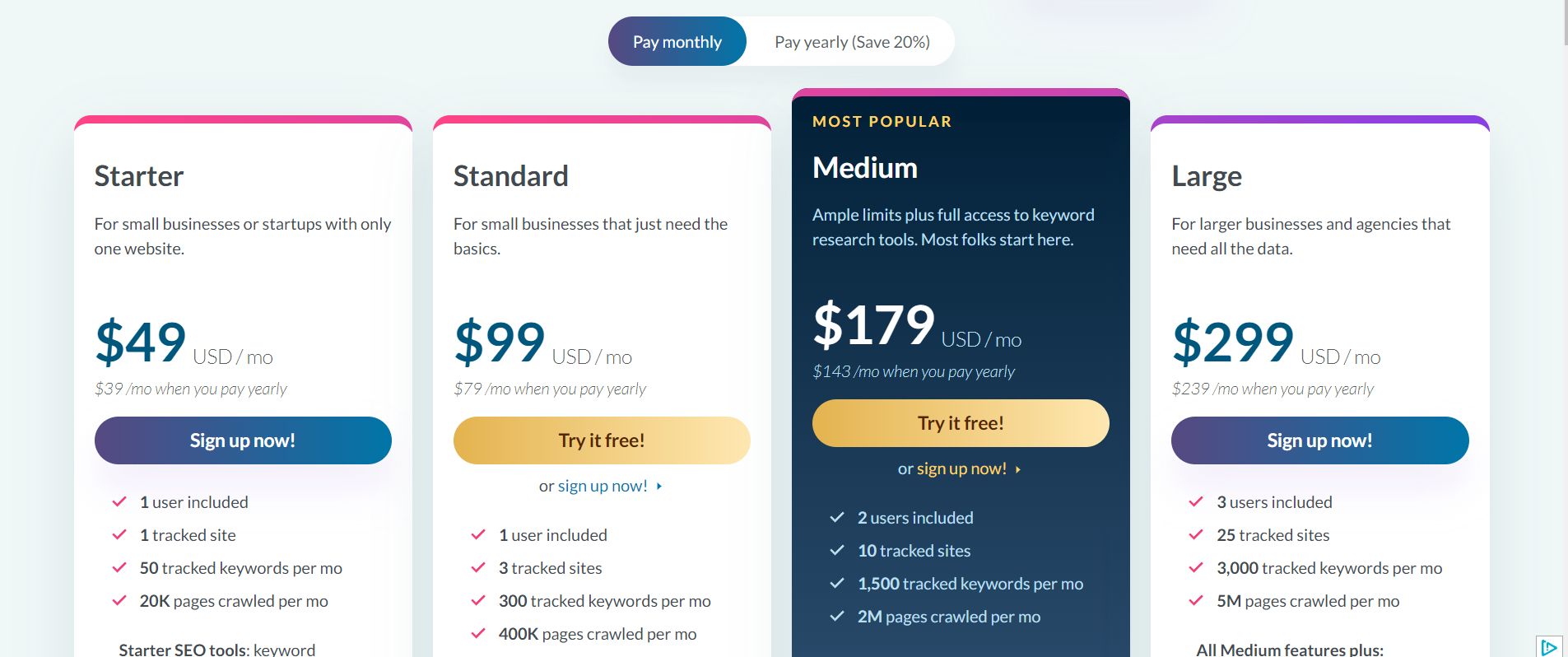
Unlike Semrush, Moz doesn’t offer a free plan. However, there are some limited free SEO tools available, and you can also sign up for a 30-day free trial on the Standard and Medium plans.
Moz Pro’s main paid plans are:
Starter plan
Pricing: $49 per month (monthly payments) or $39 per month (annual payments)
- Keyword research tools, website tracking, a premium version of the MozBar SEO toolbar, and competitor research
- 1 user account
- Track 1 website
- Create 1 keyword list
- Track 50 keywords per month
- Conduct 75 backlink queries per month
- Crawl 20,000 pages per month
- 24-hour user support
Standard plan
Pricing: $99 per month (monthly payments) or $79 per month (annual payments)
- Everything from the Starter plan, plus backlink analysis and unlimited scheduled reports
- 1 user account
- Track 3 websites
- Create 5 keyword lists
- Track 300 keywords per month
- Conduct 5,000 backlink queries per month
- Crawl 400,000 pages per month
- 24-hour user support
Medium plan
Pricing: $179 per month (monthly payments) or $143 per month (annual payments)
- Everything from the Standard plan, plus templates and branding for reports
- 2 user accounts
- Track 10 websites
- Create 30 keyword lists
- Track 1,500 keywords per month
- Conduct 20,000 backlink queries per month
- Crawl 2 million pages per month
- 24-hour user support
Large plan
Pricing: $299 per month (monthly payments) or $239 per month (annual payments)
- Everything from the Medium plan, plus improved limits
- 3 user accounts
- Track 25 websites
- Create 60 keyword lists
- Track 3,000 keywords per month
- Conduct 70,000 backlink queries per month
- Crawl 5 million pages per month
- 24-hour user support
There’s also the option for an Enterprise plan, but you’ll need to contact Moz’s sales team to discuss the details. Keep in mind that there are further costs to expand usage limits and add extra users to each plan.
You may also be interested in...
- SEO for affiliate marketing: a beginner’s guide to boosting traffic and conversions
- Shopify SEO: Game-changing tips to supercharge your store
Moz advantages
- Cheaper pricing: Moz’s cheapest tier, the Starter plan, starts at just $39 per month. That’s considerably cheaper than Semrush’s Pro plan, making it a good budget option.
- More additional users: With Semrush, you’ll need to pay extra to add other user accounts, regardless of your plan. But Moz offers additional users on the Medium and Large plans, and a flat rate of $49 per month for adding users on any plan.
- Generous limits: Moz is more generous with most of its usage limits than Semrush. For example, you can track 1,500 keywords per month on Moz’s Medium plan for considerably less money than Semrush’s Guru plan.
Moz disadvantages
- Limited features: If you’re just looking for SEO features, then Moz could be the perfect tool for you. However, it doesn’t include the paid advertising, social media marketing, and other tools that Semrush does. Semrush is a more comprehensive platform overall.
- No link-building email tools: Moz is also missing out on the email outreach tools that Semrush provides for link building, making the process less streamlined.
Level-Up Your SEO With Whop
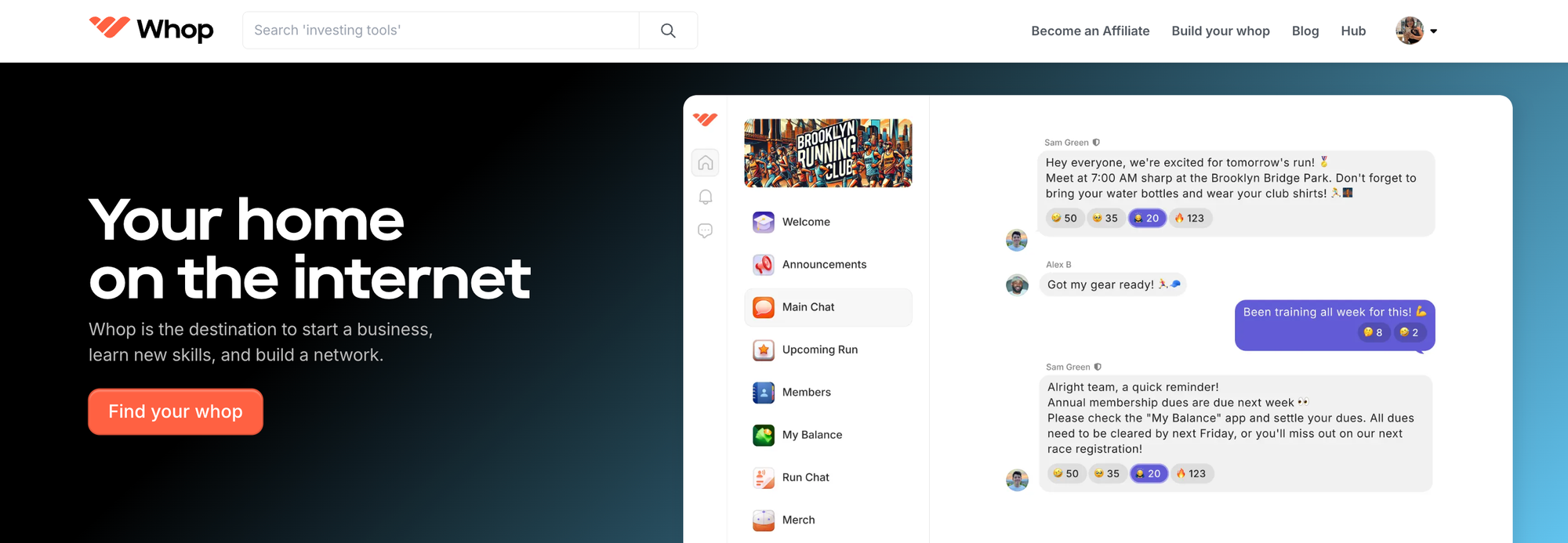
So, between Semrush and Moz, the best choice for your business depends on your needs. If you’re looking for an all-in-one marketing solution, go with Semrush. If you just want SEO tools at a more affordable price, then choose Moz.
To really make the most of your SEO efforts, find a community or course and learn SEO from the experts. The Whop Marketplace is home to hundreds of marketing courses and communities - including those that are SEO-focused. With these, SEO professionals teach you everything you need to know, from the best tools to use, to SEO SOPs, and ultimately how to get more traffic to your site.
Explore the Whop Marketplace and start your SEO education journey.


